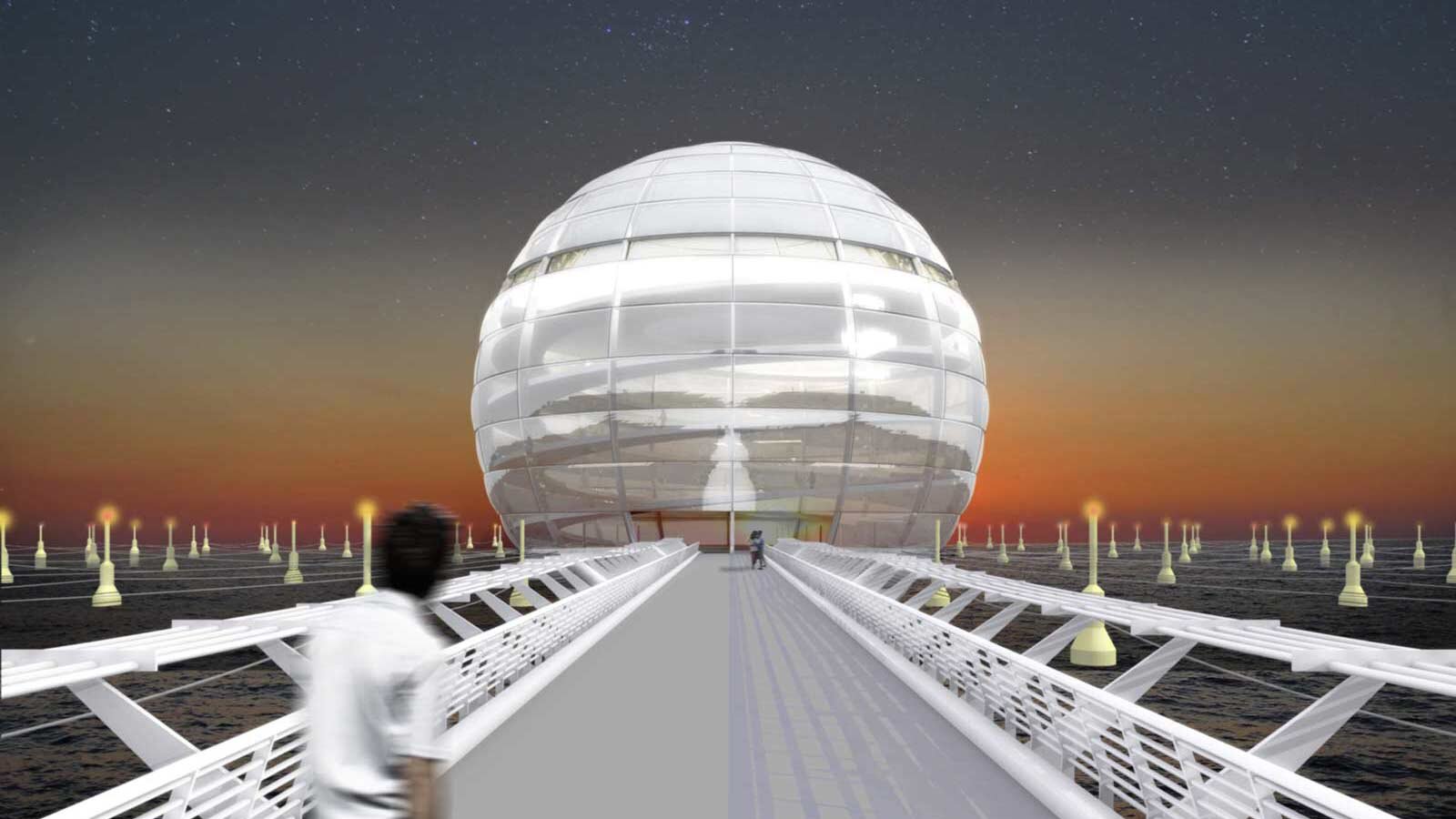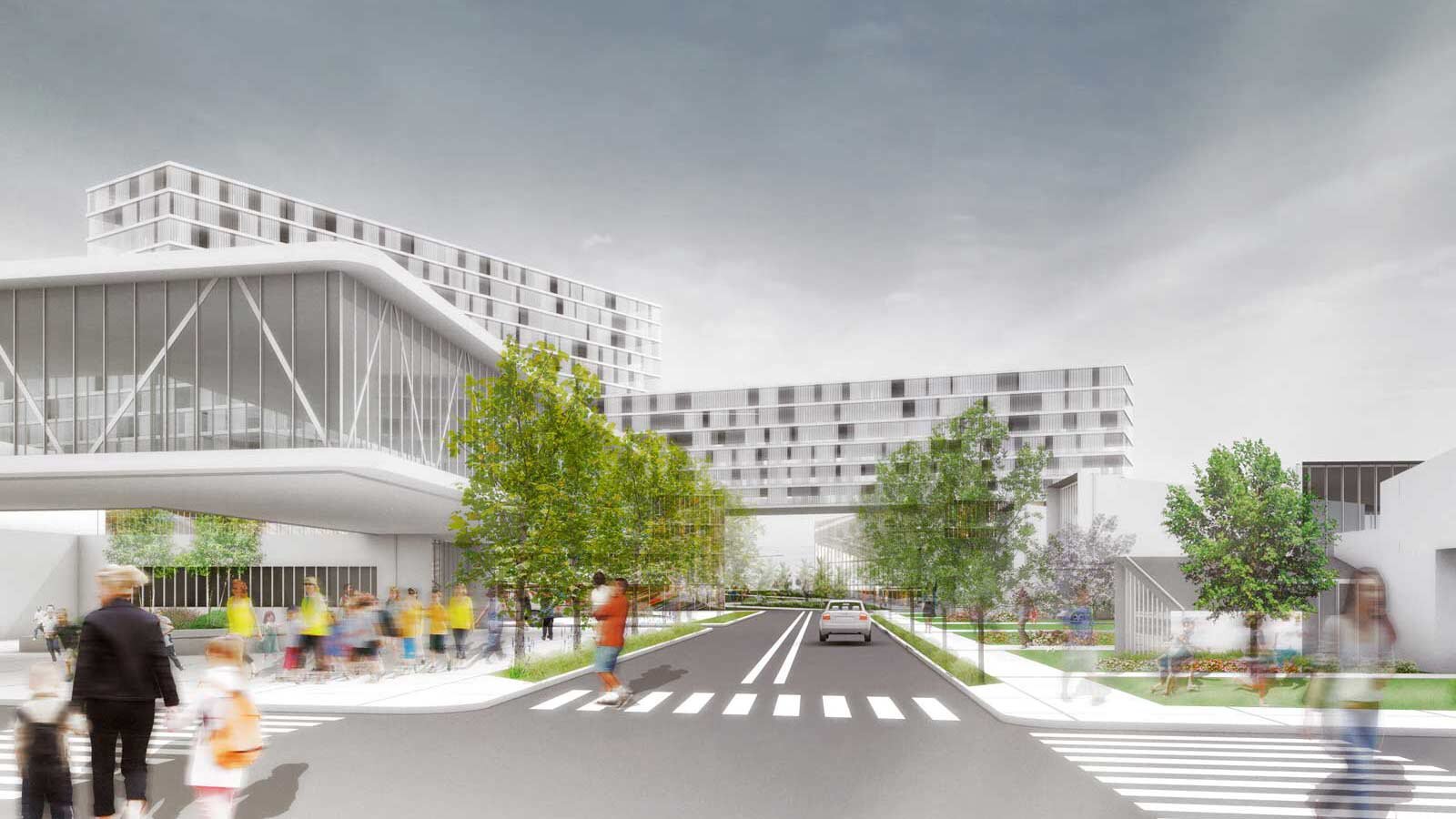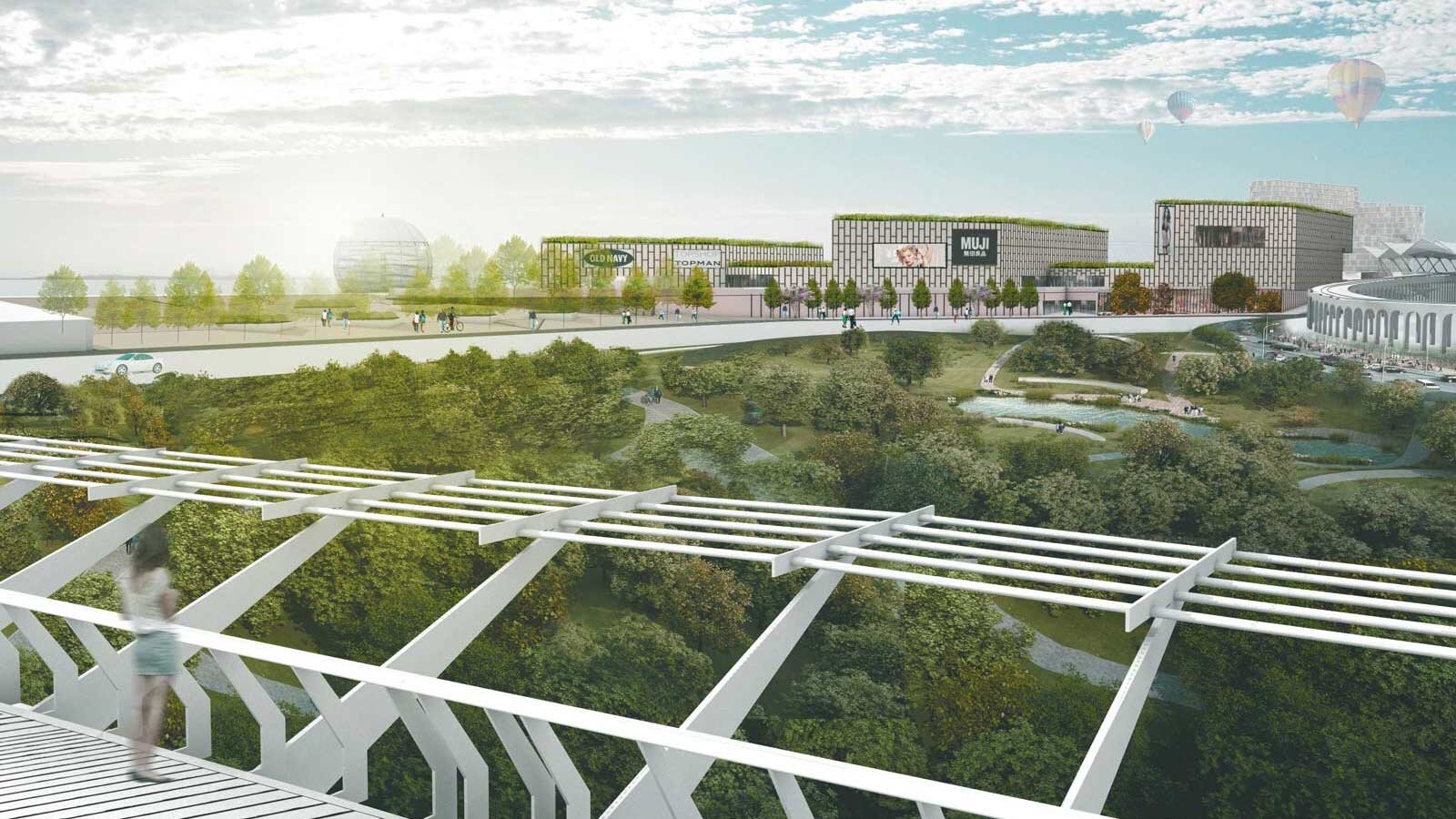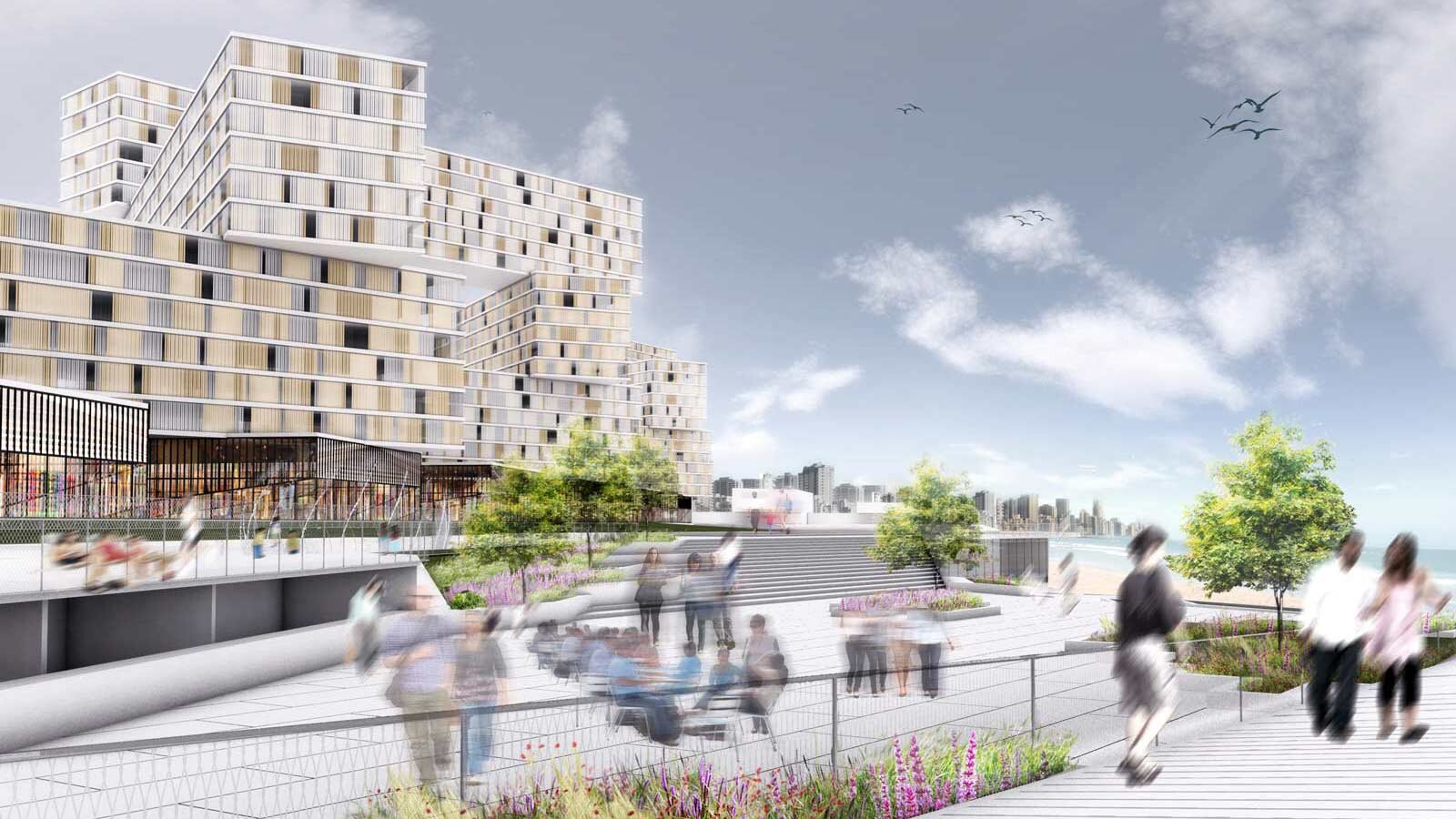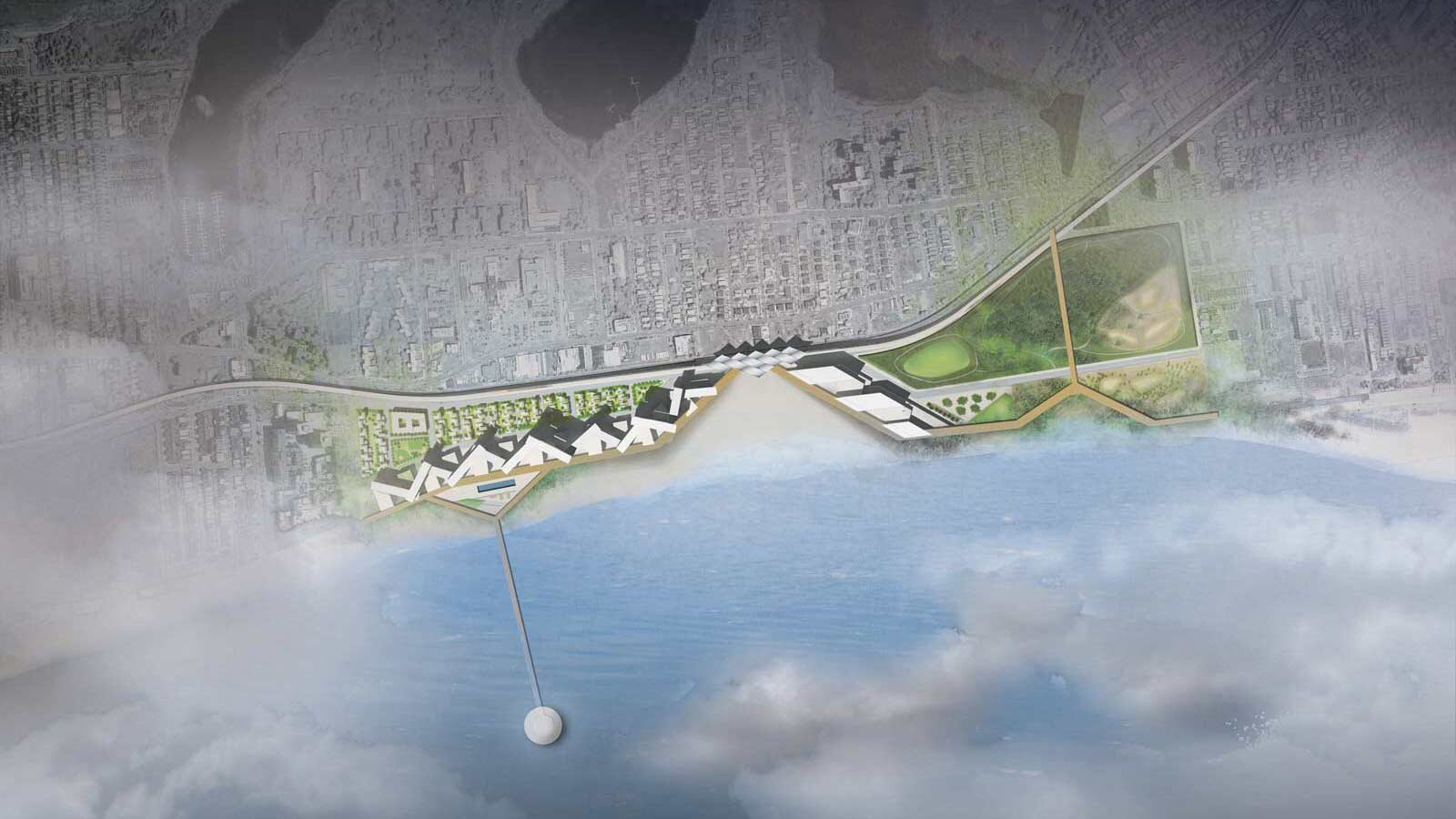Storm surge and sea-level rise have gained much attention with regard to the design of our cities in the last two decades due to the noticeable increase and frequency of intense hurricanes in dense areas. In combination with climate change and rising sea levels these cataclysmic events are becoming more destructive financially, identifying weaknesses within current infrastructural and physical planning. This natural problem calls for new landscape and urban planning prototypes that armor the shoreline while still enabling it with the development demands of contemporary society. Conduit Community proposes the use of a landscape technique known as the dyke, or raised coastal ground, as a natural barrier for sea-level rise and storm surge. The dyke, historically a landscape device utilized in the low flood delta basins of the Netherlands, is both a mechanic for water mitigation but also a linear urban armature that carries infrastructural lines such as energy to the community. The dyke is designed to react to multiple weather conditions utilizing articulated tunnels to allow wetland and habitat to permeate the edge condition and connect to the proposed nature preserve and the open space near Jamaica Bay. An engineered spillway through the preserve into the bay could allow relief to the dyke during hurricane and non-hurricane events.
/ Drawings
Community Conduit addresses these issues of larger sustainable infrastructural planning and articulates them onto the landscape utilizing the dyke not only as a conduit for major infrastructural utilities but also as a platform for social program. The dyke is lined with retail opportunities and recreational spill out areas of varying types and sizes formalizing an intense social edge that engages and stimulates activities on either side of it. This virtual spine condition that thickens and densities the relationships adjacent to it by taking an existing striated homogenous land planning condition and enriching it with a heterogeneous differentiated social mix. The energy collector, beyond operating as a source point for clean resources, functions as a public cultural lookout platform over the Atlantic. It is a floating object, that exposes the public to their that signifying a local identity of autonomy while simultaneously via shape signifying the world itself giving rise to a global common need for clean energy. It is a Both-and condition, realizing locality and worldliness, in simultaneity.
/ Images
/ Project Team
Jonathan A. Scelsa, Jennifer Birkeland, & Nick Mitchell
/ Project Info
/ Project Type - Urban Design Competition
/ Location - Queens, NY
/ Project Date - 2015

